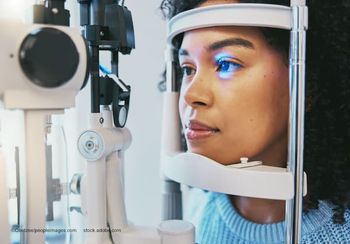
Researchers find low risk of COVID-19 transmission in tears
Day after day, new information is added to the current knowledge about the severe acute respiratory syndrome
While it currently is clear that the virus is transmitted in droplets spread through coughing and sneezing by infected patients, a new study found that the virus does not seem to be present in the tears of those patients.
“Transmission through infected ocular tissue or fluid has been controversial. It is hypothesized that the nasolacrimal system can act as a conduit for viruses to travel from the upper respiratory tract to the eye. Hence, ocular tissue and fluid may represent a potential source of [the virus],” the investigators said.
Related:
Before appearances in Europe, North America, South America, and Africa, Singapore experienced local transmission in multiple clusters across the country.
The National University Hospital Department of Ophthalmology, a high-volume ophthalmology center in Singapore, offers an example of infection control measures implemented in the setting of
Armed with this knowledge, ophthalmologists may be able to balance the infectious disease risks with continuing care for ophthalmology patients during this period, prompting this perspective of infection control strategies at the National University Hospital Department of Ophthalmology, Singapore.
Lead author Ivan Seah Yu Jun, MBBS, and colleagues from the National University Hospital and several other institutions in Singapore set out to determine in a prospective study if the virus is transmitted in tears by assessing for its presence using quantitative reverse transcription polymerase chain reaction (RT-PCR).
Related: VIDEO:
In this study, the investigators collected 64 tear samples from 17 patients with the virus at different time points following the onset of the initial symptoms (range, days three to 20).
The samples were collected from both eyes of the patients using Schirmer’s test strips over the course of the study with 12, 28, and 24 samples, having been obtained during the first, second, and third weeks of the initial symptoms, respectively, and then analyzed by RT-PCR. All patients had tested positive for the infection by RT-PCR analysis of nasopharyngeal swabs.
Related: VIDEO:
The patients were assessed for ocular symptoms that included red eye, tearing blurred vision, discharge, and color desaturation, the investigators reported, which are the ocular symptoms manifested by other coronaviruses that infect humans and animals.
Patients also were assessed for other symptoms of
During the hospital stay, one patient developed conjunctival injection and chemosis; 14 patients presented with upper respiratory symptoms that included cough, rhinorrhea, and sore throat.
Related: WATCH:
Findings
“All patients tested negative for
The authors reported that they are unaware of any other study that compared viral shedding in tears with the results of nasopharyngeal swab results during the course of COVID-19 infection, although a previous study reported positive results, but the virus could not be successfully isolated (J Med Virol. 2020; 2020 Feb 26. doi: 10.1002/jmv.25725. [Epub ahead of print]).
Dr. Jun pointed out that in the study under discussion there was no evidence of
The time points at which the tears were sampled in the current study covered the 2 weeks of active infection, and all tear samples tested negative even when the nasopharyngeal specimens continued to test positive.
Related: VIDEO: COVID-19: Taking precautions with patients
“Patients with symptoms of upper respiratory tract infections did not demonstrate any viral shedding in tears, suggesting that the hypothesis of the lacrimal duct as a viral conduit may not be true,” the investigators commented.
They also pointed out that only one patient developed ocular symptoms and there was no evidence of virus in the tear samples, thus “suggesting that transmission through tears regardless of the phase of infection is likely to be low.”
However, the investigators issued the caveat, i.e., that “
In addition, more studies are warranted to determine the association between serum viral load and viral shedding in tears.
As more information about
Meanwhile, these measures may serve as a starting point for those beginning to consider this new threat for ophthalmology practices, especially in areas where the number of cases may climb rapidly in the near future.
Read more by Lynda Charters
Newsletter
Don’t miss out—get Ophthalmology Times updates on the latest clinical advancements and expert interviews, straight to your inbox.



















































.png)


